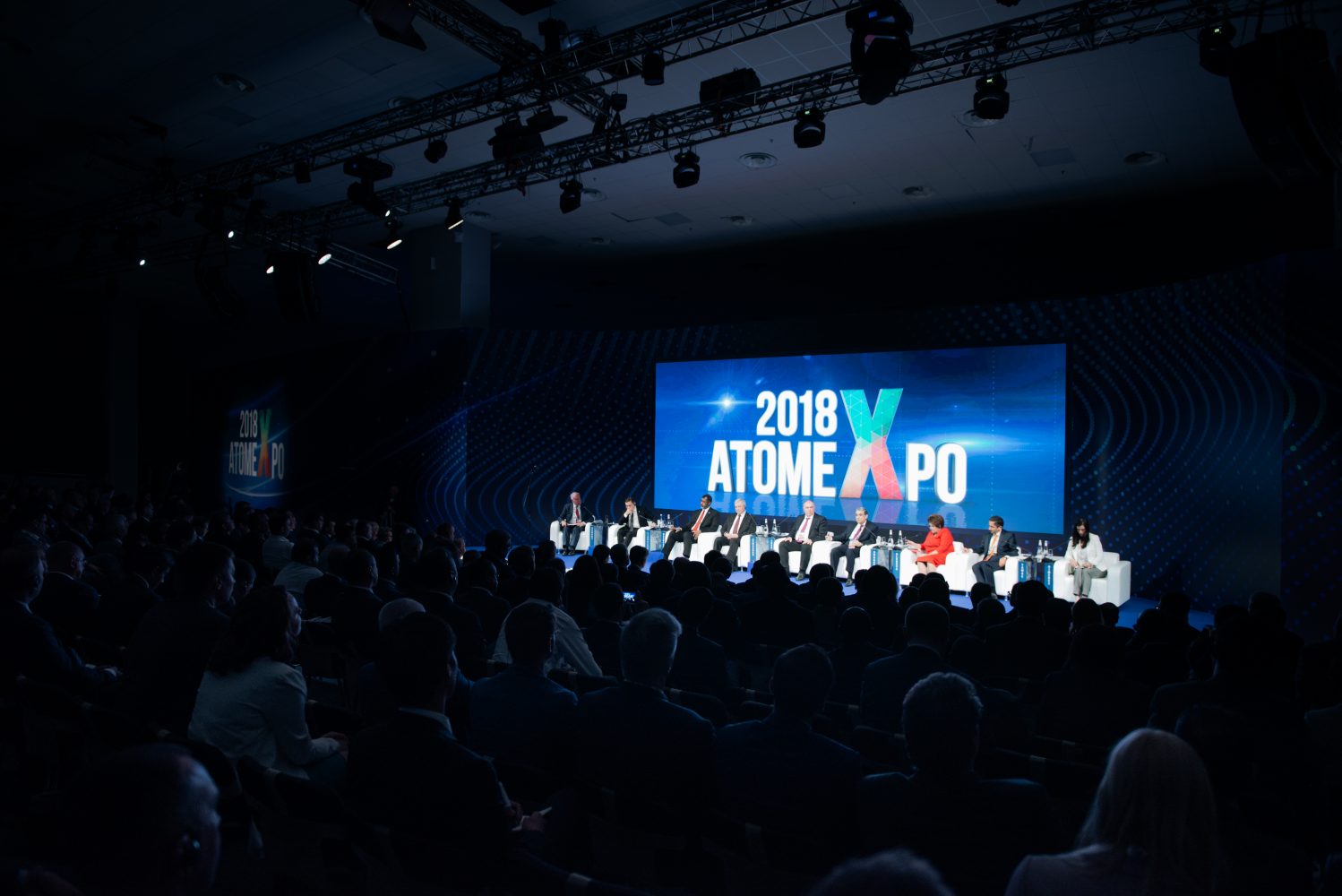
Erasing Borders
back to contentsAlexei Likhachev
CEO of Rosatom
– The global nuclear industry is influenced by three overarching factors – increased environmental awareness, digital transformation, and a politically and economically multi-polar world. We should take these trends into account.
According to the World Nuclear Association (WNA), we will have to commission 20 GW of new capacity on the annual average (10 GW annually in the near future and 35 GW at peak – RN). Commissioning new capacity on this scale is not a feat or a breakthrough but a conveyor, and should become customary. This is a huge challenge for Rosatom and the global nuclear industry.
New alliances – in nuclear procurement, interaction between contractors, project owners and governments and, of course, in science – have taken shape over the last decade. Rosatom is open to cooperation with any countries or companies, whether major global players, public organizations or small innovative businesses.
Mohamed Shaker
Minister of Electricity and Renewable Energy, Egypt
– Renewable sources of energy are our top priorities. We plan to increase the share of renewable energy to 20% of our energy mix by 2022, 37% by 2035, and 50% by 2050. Electricity is key to national security, and we will continue supporting every green energy project.
Construction of a Russian-designed nuclear power plant will make Egypt a meaningful player on the energy export market. The plans are to supply energy to Sudan and Saudi Arabia. We also keep working on expanding our grid capacity. By the end of 2019, we plan to increase the length of our high voltage grids three times as compared to 2014 (when the new government came to power in Egypt – RN).
Necati Yamaç
Deputy Undersecretary of Ministry of Energy and Natural Resources, Turkey
– The Turkish economy grows 5% on the annual average, with population growing 2%. The country depends on imported energy – about 72% of electricity is supplied from abroad. This costs approximately 55 billion US dollars a year. The Akkuyu nuclear power plant will therefore strengthen the country’s energy security.
We also plan to build the world’s largest solar park with an installed capacity of 1,000 megawatts and have almost completed the engineering part of a wind farm project. However, renewable energy is not an alternative, but rather a supplement to nuclear power. We plan that the nuclear station will account for 10% of the national energy mix by 2023.
Hortensia Jiménez Rivera
Director General of Bolivian Agency for Nuclear Energy (ABEN)
– Until recently, Bolivia was lagging behind other countries of its continent. The political and cultural situation changed dramatically in 2005 (when Evo Morales Ayma was elected President of Bolivia and became the first Latin American president from an indigenous community – RN). The Government took an absolutely new approach to managing the country and its economy. Since then, science and education have played a much larger role than ever before.
No sovereignty is possible with technological development. We cannot be free without science and knowledge. The way we chose to develop our nuclear project (Rosatom will build a nuclear science and technology center in Bolivia – RN) implies technology internalization rather than just acquisition, participation in educational programs, and much more. We are interested in cooperation with countries like Russia, which is a leader in nuclear technology and views science as an important element of a sovereign state.
Vladimir Semashko
Deputy Prime Minister, Belarus
– As soon as we started building a nuclear power plant in Belarus (with Russia’s input – RN), the Government made its position clear – it should be an advanced and reliable power plant that meets the strictest international safety standards. In 2016, the construction site was visited by IAEA Director General Yukiya Amano who noted that the Belarus NPP was one of the most successful projects in emerging nuclear countries. In March 2018, EU experts came to the country to verify the results of nuclear safety stress tests. Their next visit is scheduled for June (the peer review report will be published in July – RN). Openness and transparency serve public interests and improve global safety culture.
William D. Magwood, IV
Director General of OECD Nuclear Energy Agency
– Different countries have different drivers behind the development of their national nuclear industries. Countries like Bolivia aim at acquiring advanced technology from other countries. China and the like target capacity expansion. Others, predominantly developed countries, are more concerned about environmental issues, particularly global warming, than access to electricity. In other words, each country benefits from nuclear technology in its own way. But the choice they make is relevant to us all.
Just a few countries are capable of building a nuclear power plant without engaging other countries. Russia, for example, engages multiple suppliers from those countries where it constructs nuclear plants. Nuclear can be said to have erased national borders and turned into a global industry. We all work together to create a single playground for decision making. Each country should take into account the global context while achieving goals on the national scale and have reliable partners and technology to maintain safety in the world.




